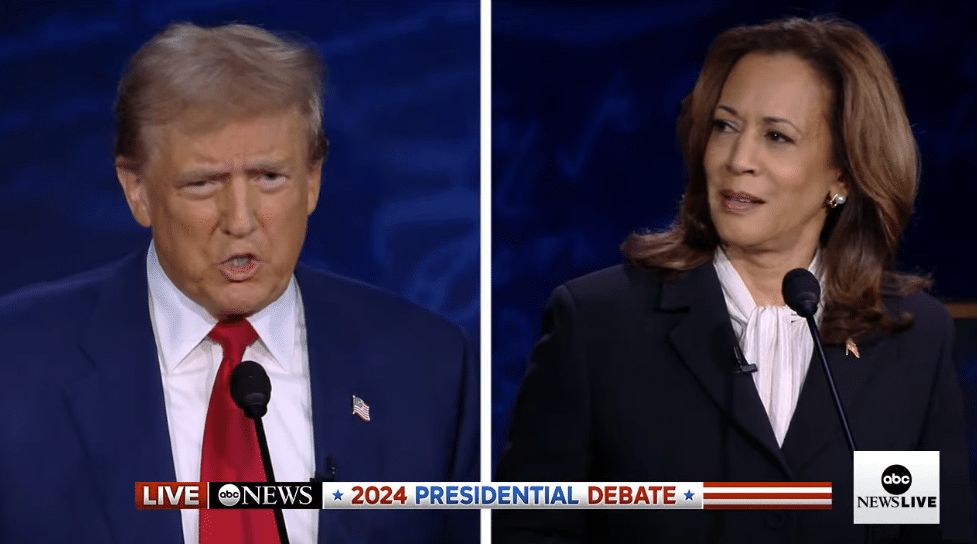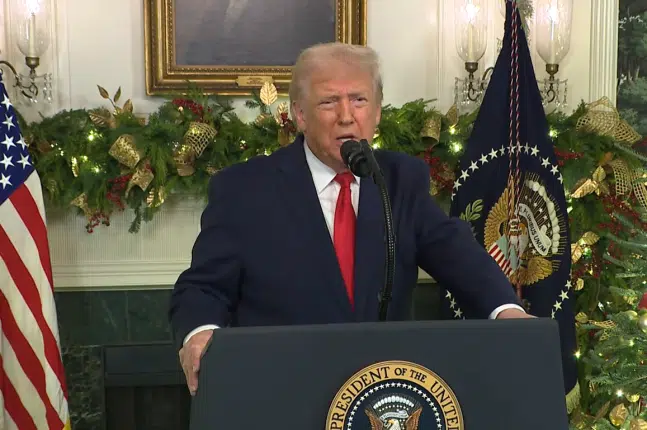
A whopping 64.3 percent of Americans say that the U.S. is on the wrong track, with only 26.9 percent saying it’s on the right track, according to the latest national polling average compiled by RealClearPolling.com, and that’s usually bad news for the incumbent party.
In recent cycles, when the White House incumbent party was seeking another term, a relatively high right track usually correlated with the incumbents winning, and a low right track has correlated with losses.
That makes every election a referendum on the incumbents. Every one of them.
The news comes at former President Donald Trump appears to be holding onto a narrow Electoral College lead over Vice President Kamala Harris in state polls and Republicans have dramatically improved their early voting operations from where they were in 2020.
Historical data compiled by Gallup bears this out as well. In 1980, when Ronald Reagan ousted the incumbent President Jimmy Carter, from Nov. 2019 to Jan. 1981, only 18 percent of Americans were satisfied with the direction of the country. And with sky-high inflation, unemployment and a recession in 1980, it is no wonder.
Whereas, by Sept. 1984, even with an intervening recession in 1982, the economy was in major recovery and boom, public satisfaction had recovered dramatically, with 48 percent saying they were satisfied, and so Reagan went on to easily defeat Walter Mondale.
Similarly, in Sept. 1988, public satisfaction with the country’s direction stood at 56 percent, and George H.W. Bush easily defeated Michael Dukakis for a third consecutive Republican term.
But by Nov. 1992, with a recession, public satisfaction plummeted to 26 percent, and so Bill Clinton ousted the incumbent Bush.
By Nov. 1996, with the recession in the rearview mirror, things looked a lot better, public satisfaction rose to 47 percent, and so Clinton easily won reelection against Bob Dole.
An exception might be 2000, when in Oct. 2000, public satisfaction was at 62 percent, but George W. Bush narrowly defeated the incumbent Vice President Al Gore. However, it’s worth noting that Gore was going for a third consecutive Democratic term and those are tougher to secure.
Returning to the trend was 2004, where the incumbent Bush defeated John Kerry as public satisfaction stood at 44 percent in Oct. 2004.
By 2008, the economy was imploding, however, and public satisfaction hit a record low of 8 percent by Oct. 2008, and Barack Obama crushed John McCain, who was running for a third consecutive Republican term.
In 2012, the economy was in recovery, and by Nov. 2012, public satisfaction had recovered too to about 33 percent, and Obama defeated Mitt Romney in his reelection bid.
By 2016, confidence had been flat to dipping, hitting 28 percent by Oct. 2016, and Donald Trump narrowly defeated Hillary Clinton, who had been seeking a third consecutive Democratic term.
And in 2020, right before Covid, public confidence was being recovered, and satisfaction stood at 45 percent in Feb. 2020, but with the global economy locked down amid the Covid recession, by Nov. 2020 it was 21 percent, and Trump narrowly lost reelection to Joe Biden.
Today, per Gallup, public satisfaction, which had recovered to 36 percent by May 2021, began plummeting amid the rising levels of inflation, hitting a low of 13 percent by July 2022, and in Oct. 2024, stands at just 22 percent, about where it was when Trump lost his reelection bid.
The lesson seems to be that first term incumbent parties are tough to beat — they usually win about two-thirds of the time in U.S. history — with recorded wins in 1984, 1996, 2004 and 2012, but that when they do lose, in 1980 and 2020, it was at times when public confidence and satisfaction was quite low. 2012 and 2020 show this especially to be true, with Obama winning with a middling satisfaction number and Trump barely losing with a pretty low satisfaction number.
Once again, in 2024, we have a first term incumbent party represented by Kamala Harris and the Democrats seeking another term, but the public is unsatisfied with the direction of the country. Usually, that means the public is saying it’s time for a change. But we’ll see. Stay tuned.
Robert Romano is the Vice President of Public Policy at Americans for Limited Government Foundation.






